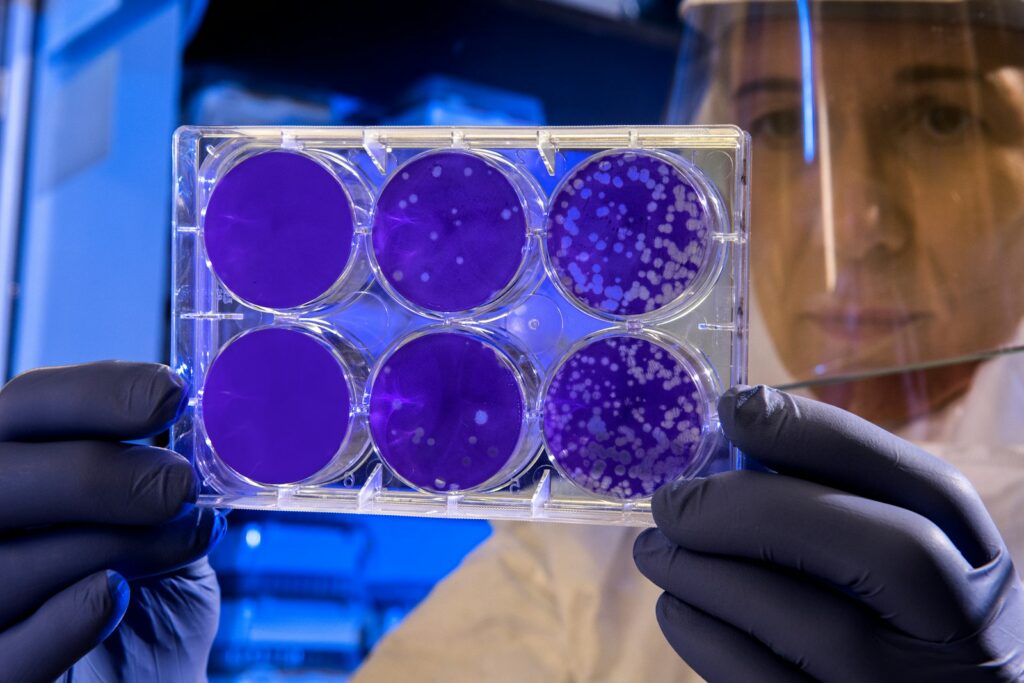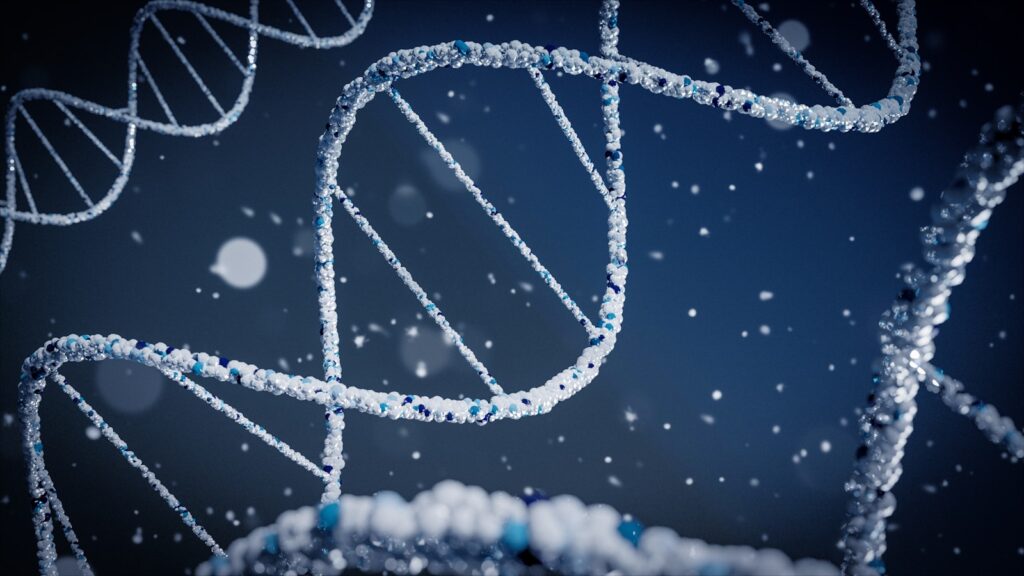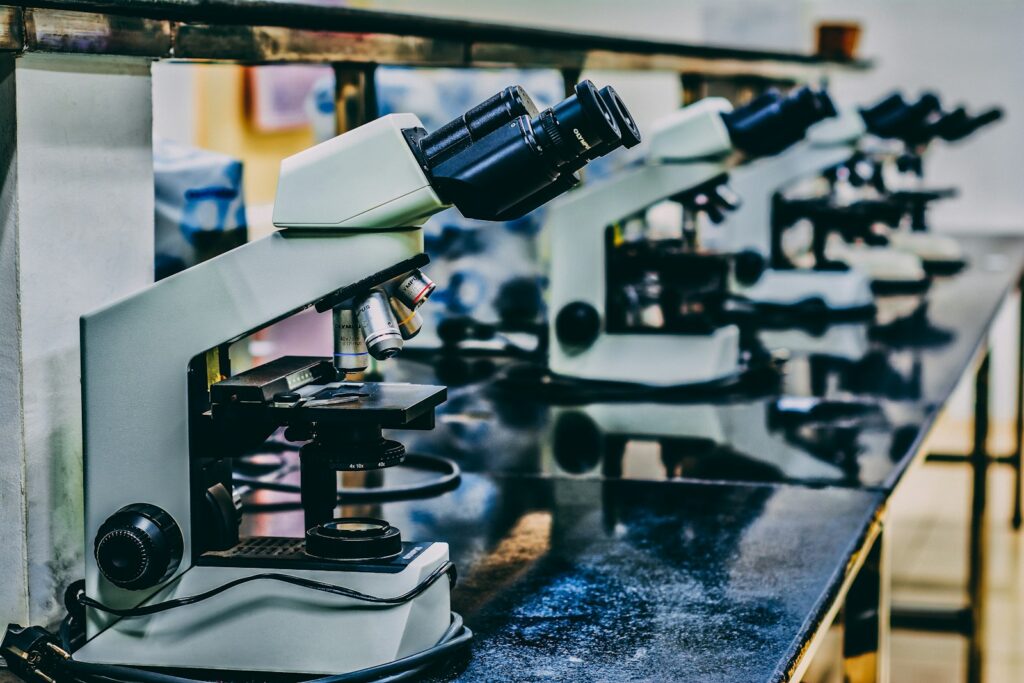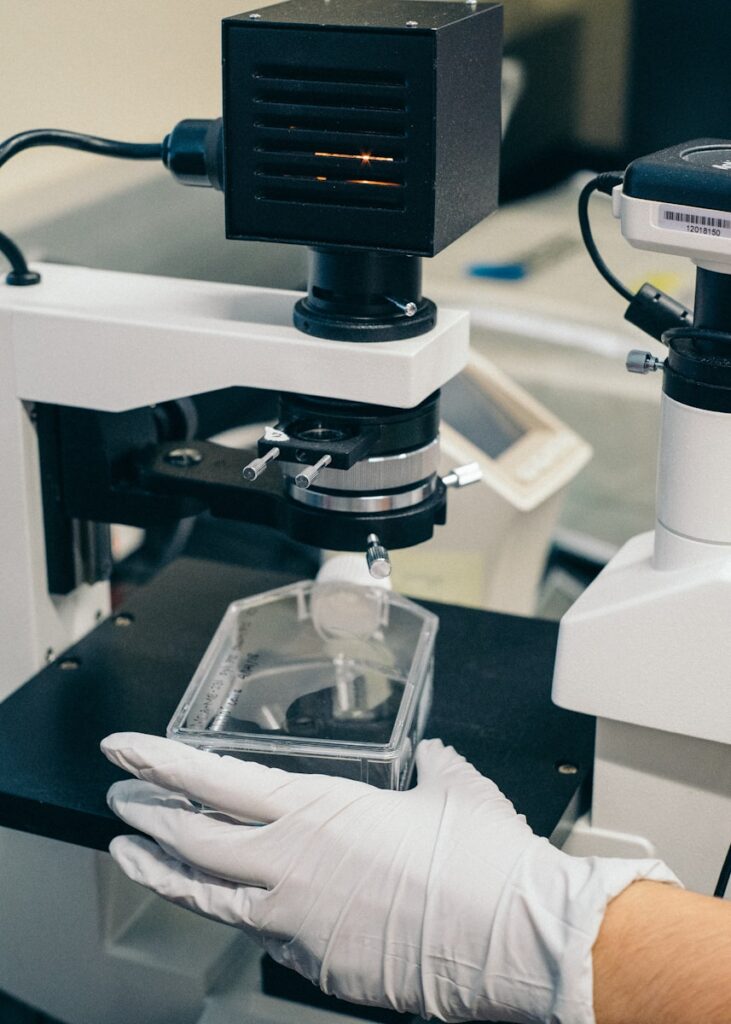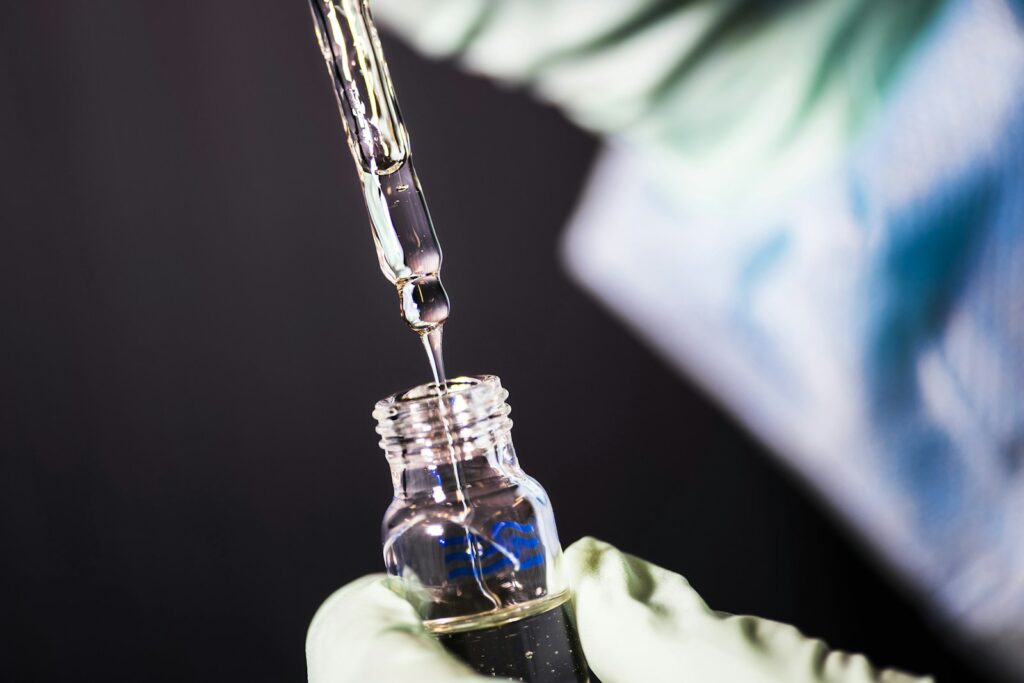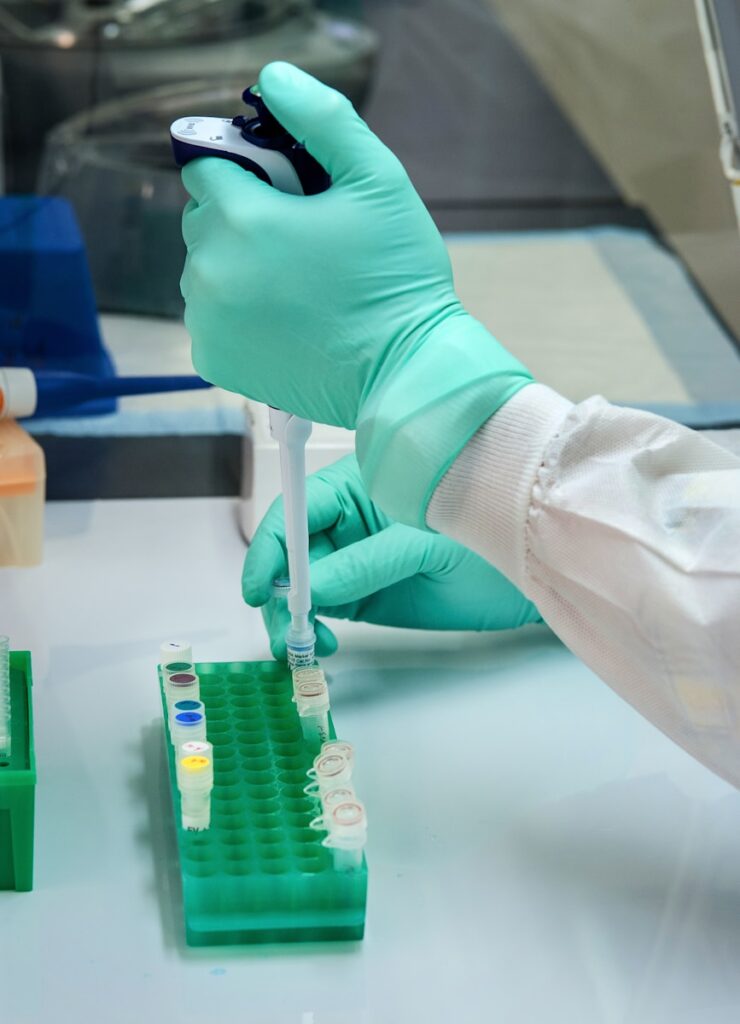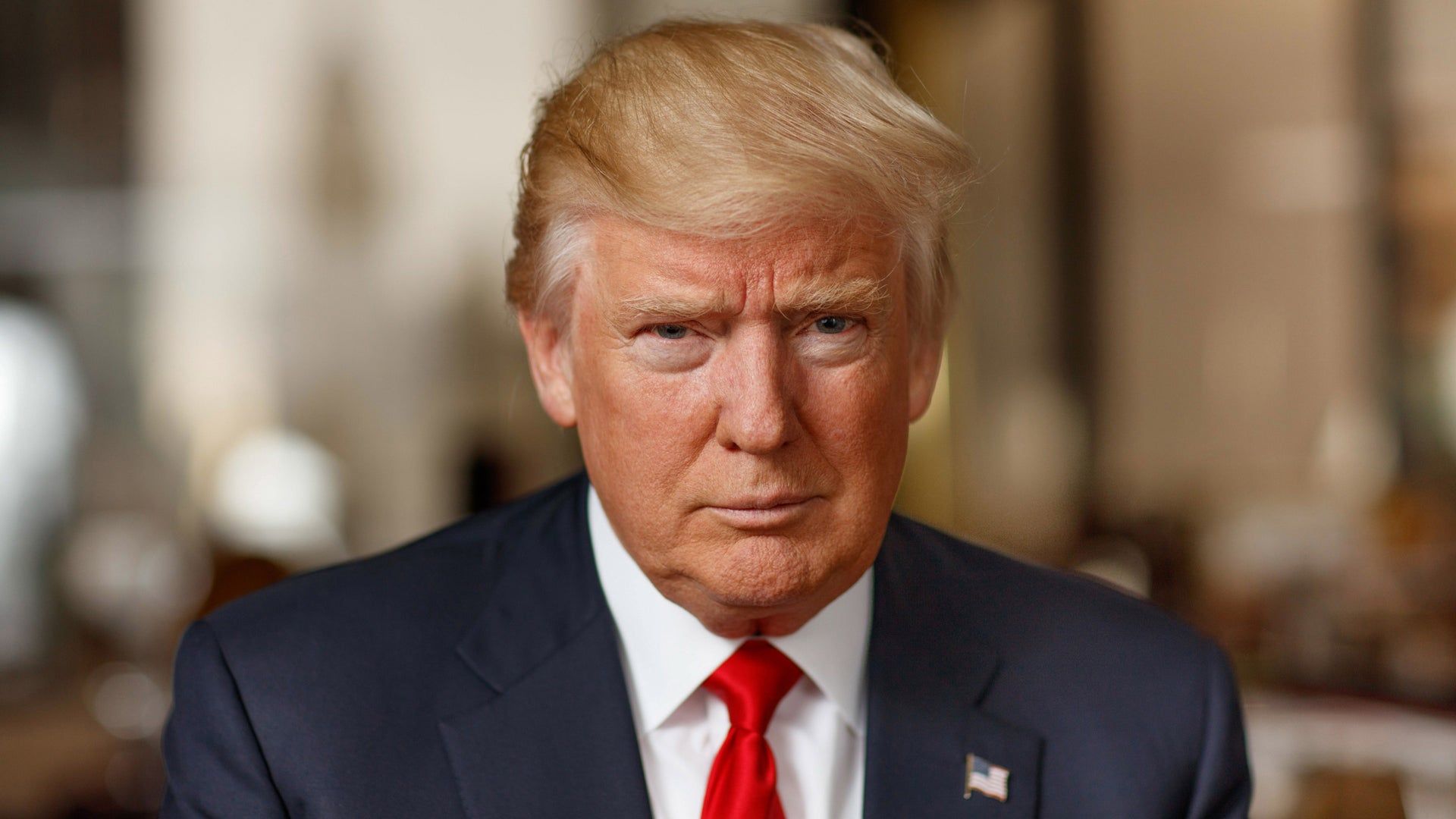The scientific community mourns the passing of Dr. John B. Gurdon, a British biologist and Nobel laureate, who died on Tuesday at the age of 92. His demise, confirmed by Ben Simons, the director of the Gurdon Institute at the University of Cambridge, marks the end of an era defined by profound advancements in developmental biology. Dr. Gurdon’s groundbreaking work, initiated in the early 1960s, introduced a paradigm-shifting method of cell manipulation that not only challenged long-held scientific dogmas but also laid the indispensable foundation for modern stem cell biology, regenerative medicine, and ultimately, the cloning of large mammals such as Dolly the sheep.
Dr. Gurdon’s contributions were not merely incremental; they represented a fundamental reorientation of scientific thought regarding cell differentiation and genetic potential. His pioneering experiments demonstrated that the specialized state of a cell was not fixed and irreversible, a concept previously believed to be impossible. This revelation unlocked new avenues of research and understanding, transforming the biological sciences and inspiring generations of scientists to explore the intricate mechanisms of life and development. His legacy extends far beyond the laboratory, touching upon the very essence of how we comprehend biological processes and their potential for therapeutic applications.
From his early academic struggles, which famously included a teacher’s dismissive assessment of his scientific aspirations, to receiving the highest accolades in his field, Dr. Gurdon’s journey was one of remarkable persistence and intellectual courage. This article will delve into the pivotal moments and discoveries that defined his extraordinary career, exploring how his insights continue to shape contemporary research and offer hope for future medical breakthroughs. We begin with the core scientific achievement that first brought him to global prominence and redefined our understanding of cellular potential.
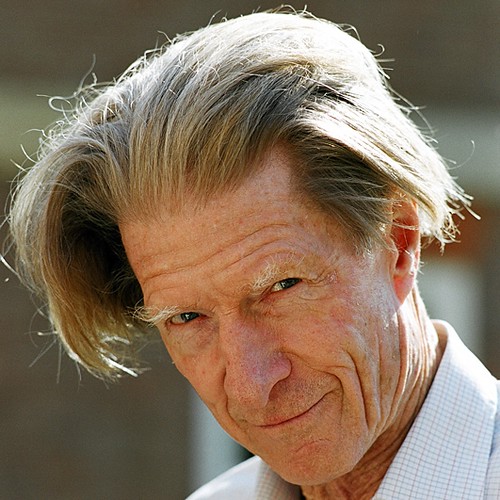
1. **The Paradigm Shift: Cell Manipulation and Nuclear Reprogramming**Dr. John B. Gurdon’s most significant contribution began with a revolutionary method of cell manipulation that fundamentally altered the course of developmental biology. In the early 1960s, while a graduate student at the University of Oxford, he devised a technique involving nuclear transfer that would challenge the prevailing scientific belief that a specialized cell was inherently limited to performing only the duties of its specific cell type. This pioneering work introduced the concept of nuclear reprogramming, demonstrating that the genetic material within a differentiated cell could be reset to an embryonic state.
This method involved extracting the nucleus, which contains the organism’s DNA, from a mature, differentiated cell, such as an intestinal cell, and then injecting it into an egg cell whose own nucleus had been removed. The remarkable outcome was that these enucleated egg cells possessed the innate ability to “reprogram” the genes in the transplanted nucleus. Instead of continuing to act as a specialized intestinal cell, the transplanted nucleus was coaxed into directing the development of an entire organism, thus proving its inherent totipotency or pluripotency could be restored. This was a direct contradiction to established scientific dogma and opened up a new realm of possibilities in understanding and manipulating cellular identity.
Dr. Helen Blau, director of the Baxter Laboratory for Stem Cell Biology at Stanford University, highlighted the profound impact of this work, stating, “Dr. Gurdon challenged the dogma that the differentiated state was fixed and irreversible.” His experiments offered undeniable evidence that the genetic information within specialized cells was not irreversibly altered or lost during differentiation but rather retained its full potential. This insight was a critical precursor to nearly all subsequent advancements in cloning and stem cell research, setting the stage for future scientific revolutions that would depend on manipulating cellular identity and function.
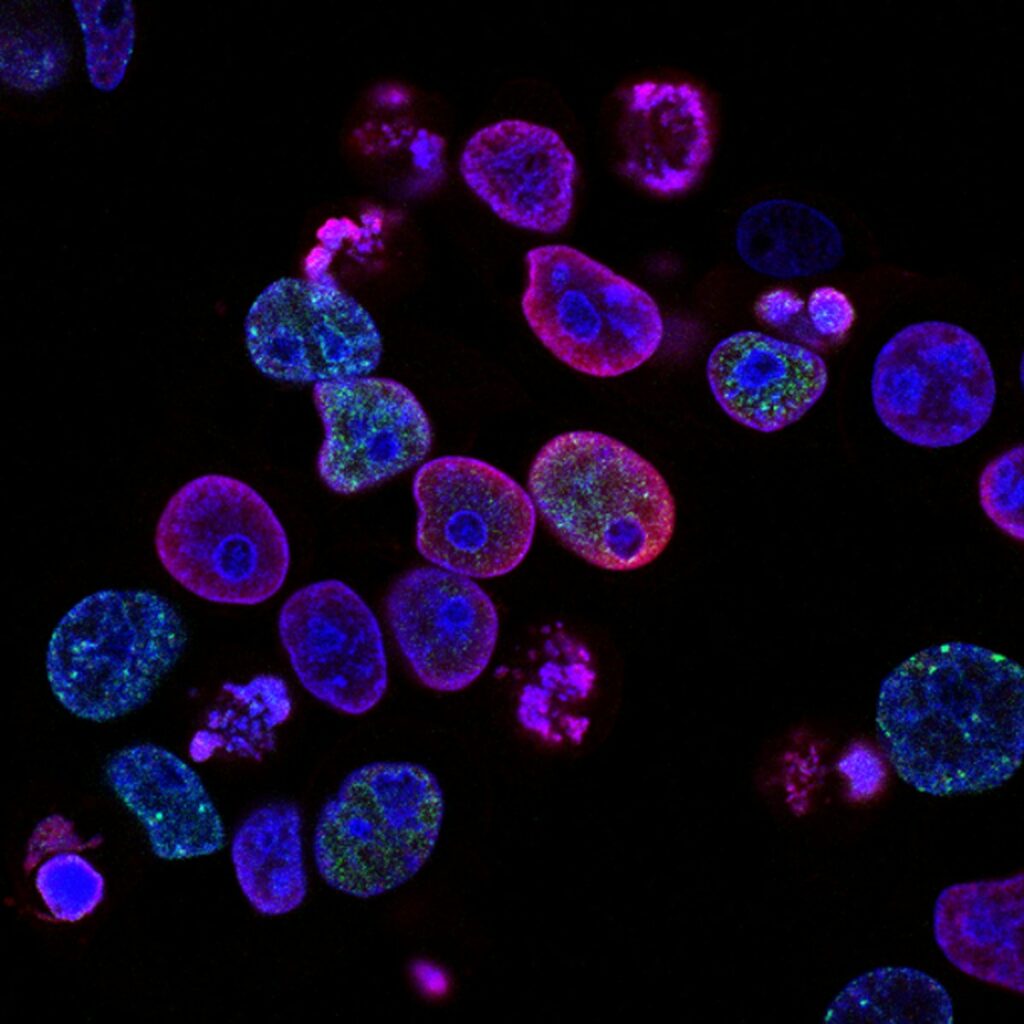
2. **The Genesis: Cloning *Xenopus Laevis* in 1962**Dr. Gurdon first came to global prominence in 1962 through the publication of his now-classic experiments, which involved the successful cloning of the African clawed frog, *Xenopus laevis*. This research, conducted in Oxford’s embryology laboratory, provided the first concrete evidence that a fully differentiated cell nucleus could be reprogrammed to produce a complete, viable organism. His choice of *Xenopus laevis* was strategic; it was an amphibian species that matured rapidly and produced eggs frequently, making it an ideal model for his ambitious nuclear transfer studies.
In these seminal experiments, Dr. Gurdon extracted nuclei from the intestinal cells of a mature frog, containing the amphibian’s complete DNA. These nuclei were then injected into frog egg cells from which their original nuclei had been meticulously removed. The result was astonishing: the eggs efficiently “reprogrammed” the genes in the transplanted nucleus, switching them from their highly differentiated role as an intestinal cell to initiating the reproduction of an entire organism. This process culminated in the development of normal, swimming tadpoles, and in some instances, even fertile adult frogs, from the nuclei of differentiated cells.
The implications of these findings were immense. While scientists Robert Briggs and Thomas J. King Jr. had previously demonstrated success with nuclei from embryonic cells, they had found that transfers from adult cells consistently produced abnormal embryos. Dr. Gurdon’s distinct methodology and choice of species, however, allowed him to achieve viable clones from adult cell nuclei, even if at a lower success rate of 1.5% compared to embryonic transfers. His 1962 paper, “Adult Frogs Derived from the Nuclei of Single Somatic Cells,” published in the *Journal of Embryology and Experimental Morphology*, irrevocably demonstrated that the developmental capacity of somatic nuclei could be restored, forever changing the understanding of cellular potential.
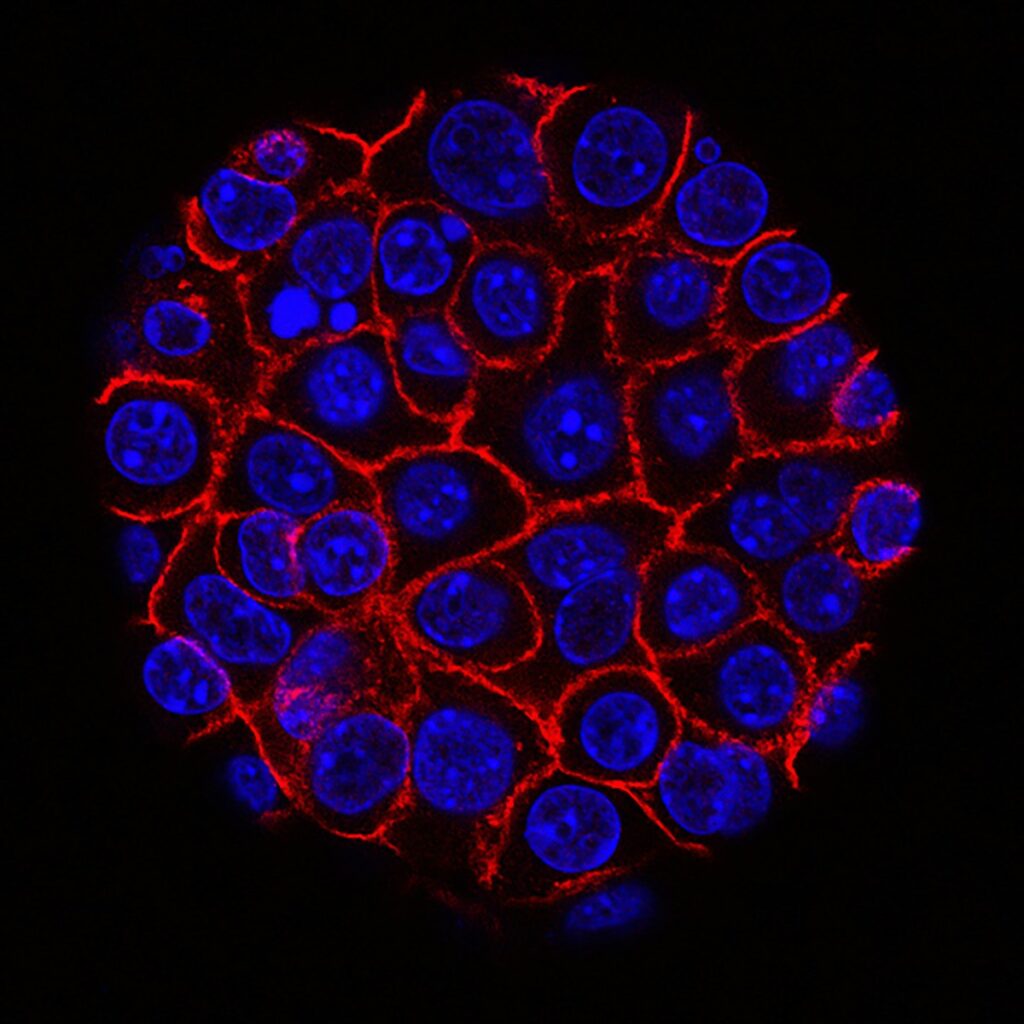
3. **Challenging Dogma: Differentiated Cells Retain Genetic Information**At the time of Dr. Gurdon’s pioneering frog cloning experiments, a deeply entrenched scientific dogma held that once a cell specialized—becoming, for example, an intestinal cell or a muscle cell—it became fixed in that state, losing its ability to perform other functions or to revert to an earlier, undifferentiated form. Scientists widely believed that as cells differentiated, they either shed or permanently inactivated the genes not essential for their specific specialized role. This implied that a specialized cell was permanently committed to its fate, with its genetic information supposedly tailored exclusively to its current function.
Dr. Gurdon’s experiment directly refuted this long-standing belief. By successfully generating tadpoles and even adult frogs from the nuclei of differentiated intestinal cells, he provided unequivocal proof that cells retain all of their genetic information, regardless of how specialized they become. The egg cell, in essence, possessed the machinery to “reset” the clock on the transplanted nucleus, demonstrating that the genetic blueprint for an entire organism remained intact within every somatic cell. As Dr. Douglas Melton, co-director of the Harvard Stem Cell Institute and a former student in Dr. Gurdon’s lab, put it, “John demonstrated that cells retain all of their genes, and through nuclear reprogramming you can take them back to the beginning.”
This revolutionary insight underscored the plasticity of the genome and the remarkable power of the egg cell to orchestrate developmental processes. It shifted the scientific understanding from a rigid, irreversible view of cellular differentiation to one of dynamic potential and reprogrammability. This paradigm shift was critical for envisioning future applications that would involve manipulating cell identity for therapeutic purposes, moving beyond the static limitations previously assumed by the scientific community. Dr. Gurdon’s work offered a foundational principle for regenerative medicine: that the genetic information to build an entire organism is present in every cell, waiting for the right cues to be expressed.
4. **Laying the Groundwork: Paving the Way for Dolly the Sheep**Dr. Gurdon’s amphibian research, particularly his successful nuclear transfer experiments with *Xenopus laevis*, established the fundamental intellectual framework that would ultimately lead to the cloning of the first large mammal, Dolly the sheep, decades later. His demonstration that a differentiated cell nucleus could be reprogrammed by an egg cell to direct embryonic development was not merely a proof of concept for frogs; it outlined a universal principle of developmental biology that transcended species boundaries. Although the cloning of Dolly in 1996 in Scotland involved mammalian cells, the underlying biological mechanism and the conceptual approach were direct descendants of Gurdon’s groundbreaking work.
The scientific community, initially skeptical of Gurdon’s results, especially in light of previous findings by Briggs and King with *Rana pipiens*, gradually came to accept and build upon his findings. Dr. Helen Blau’s mammalian studies in nuclear reprogramming, which began in the 1980s, further confirmed that Gurdon’s principles were not limited to amphibians. Her work demonstrated that nuclear reprogramming was indeed possible in mammals, providing a crucial bridge between amphibian models and the more complex mammalian systems. These successive investigations validated and expanded upon Gurdon’s initial insights, making the eventual cloning of a mammal a tangible, albeit challenging, goal.
The eventual cloning of Dolly the sheep by Sir Ian Wilmut and his colleagues at the Roslin Institute in Scotland was a direct testament to the theoretical and technical groundwork laid by Dr. Gurdon. His experiments had proven that the genetic material from an adult somatic cell retained the capacity to orchestrate the development of an entire organism when properly reprogrammed within an enucleated egg. Dolly’s creation, a feat that captured global attention, would have been scientifically inconceivable without the preceding decades of research spearheaded by Dr. Gurdon, solidifying his role as a true pioneer in the field of cloning and regenerative biology.
5. **The 2012 Nobel Prize: Shared with Shinya Yamanaka**In 2012, Dr. John B. Gurdon’s transformative contributions to science were formally recognized with the Nobel Prize in Physiology or Medicine, an honor he shared with Japanese physician and researcher Dr. Shinya Yamanaka. The prize was awarded “for the discovery that mature cells can be reprogrammed to become pluripotent.” This joint recognition underscored the complementary nature of their work: Gurdon identified the phenomenon of nuclear reprogramming, demonstrating its possibility and laying the foundational principles, while Yamanaka later elucidated the specific molecular mechanisms by which this reprogramming could be achieved in a controlled manner.
Dr. Yamanaka’s breakthrough in 2006 fully explained how nuclear reprogramming, which Gurdon had documented for decades, actually worked at a molecular level. He discovered that nuclear reprogramming occurs when specific DNA-controlling agents, known as transcription factors, coax lab-manipulated cells to respond to a nucleus transplant in a manner akin to how an egg cell reacts when fertilized by sperm. This discovery led to the generation of induced pluripotent stem (iPS) cells, a revolution in regenerative medicine, allowing scientists to create stem cells from ordinary adult cells without the ethical complexities associated with embryonic stem cells.
The Nobel Committee’s decision to honor both scientists acknowledged the profound, cascading impact of their discoveries. Gurdon’s initial demonstration of cellular plasticity opened the conceptual door, while Yamanaka’s identification of the transcription factors provided the practical key. Together, their work provided humanity with unprecedented tools for understanding disease, developing new therapies, and potentially regenerating damaged tissues and organs, thereby initiating one of the greatest medical revolutions of the 21st century. Gurdon’s Nobel Lecture, aptly titled “The Egg and the Nucleus: A Battle for Supremacy,” eloquently captured the essence of his life’s work.
6. **Early Academic Scrutiny: The Infamous Eton Teacher’s Note**Dr. Gurdon’s path to becoming a scientific giant was notably unconventional and began with severe academic setbacks, particularly during his time at Eton College, a prestigious private school. At the age of 13, he boarded at Eton, bringing his jars of caterpillars, a testament to his early fascination with entomology. However, his performance in the sciences was deemed profoundly inadequate by his teachers. Two years into his studies, a schoolmaster delivered a scathing assessment that would famously follow Gurdon throughout his career.
The teacher’s note starkly declared, “I believe Gurdon has ideas about becoming a scientist. On present showing, this is quite ridiculous.” It further criticized his biology studies as “disastrous” and stated, “If he can’t learn simple biological facts, he would have no chance of doing the work of a specialist, and it would be a sheer waste of time both on his part, and of those who have to teach him.” This profoundly discouraging evaluation had a significant “rippling effect,” causing him to be barred from all sciences at Eton and compelled to focus, instead, on Ancient Greek and Latin.
Despite this harsh introduction to formal science education, Dr. Gurdon remarkably kept a copy of this note throughout his life, even posting it on his biographical page of the Nobel Prize website. He reflected on its impact in a 2008 interview in the *Journal of Cell Biology*, calling it “a pretty crippling introduction to biology.” Yet, far from deterring him, the note served as a powerful, albeit negative, motivation. He later told a reporter, “When you have problems like an experiment doesn’t work, which often happens, it’s nice to remind yourself that perhaps after all you are not so good at this job and the schoolmaster may have been right!” This anecdote perfectly illustrates his resilience and unique perspective on personal and scientific challenges.

7. **The Undergraduate Discovery: Unearthing England’s First Sawfly**Even with the initial academic hurdles at Eton and the subsequent need for two years of science tutoring to gain entry to Oxford, Dr. Gurdon’s innate curiosity and keen observational skills manifested early in his scientific journey. Despite being unable to major in zoology immediately upon entering Oxford in 1953 due to his lack of a secondary-school science record, he made his first significant discovery as an undergraduate, an event that hinted at the remarkable observational talents that would define his future research.
While walking through woods in Oxford, he encountered an insect that superficially resembled a common housefly but exhibited subtle differences. His instinct to capture the specimen and investigate further revealed his burgeoning scientific acumen. He took the insect to the university’s entomologists, who were stumped by its identity. Undeterred, he brought the specimen to the Natural History Museum in London, where a curator finally identified it as a Hymenopteran, commonly known as a sawfly. This was not just any sawfly; it was the first ever recorded instance of this specific type of sawfly being found in England.
Dr. Gurdon published this finding in an entomology magazine in 1954, an early scholarly publication that foreshadowed a career of groundbreaking scientific contributions. This seemingly small discovery, made even before his doctoral work, showcased his meticulous attention to detail and his persistent inquiry into the natural world. It was an early indication that despite his schoolmaster’s harsh judgment, Gurdon possessed an inherent scientific mind capable of keen observation and significant discovery, laying the groundwork for the more profound revelations that would follow in his career.” , “_words_section1”: “1947

8. **Institutional Leadership and the Gurdon Institute**Dr. John B. Gurdon’s profound influence extended beyond his laboratory bench to significant roles in shaping scientific institutions, fostering environments where cutting-edge research could flourish. After completing his doctoral work and a postdoctoral year at Caltech, he returned to England, taking an early post in the Department of Zoology at the University of Oxford. His reputation for pioneering nuclear transfer experiments quickly grew, and in 1971, he made a pivotal move to the Medical Research Council Laboratory of Molecular Biology (LMB) in Cambridge. This institution, already a hotbed of scientific discovery, provided an ideal setting for Gurdon to continue his ambitious work on cellular reprogramming.
His leadership capabilities were recognized, leading to his appointment as the head of the LMB’s division of cell biology in 1979. In this capacity, Dr. Gurdon not only continued his own groundbreaking research but also guided and mentored numerous scientists, shaping the trajectory of cellular and developmental biology for a generation. His vision for collaborative and focused research environments proved instrumental in solidifying Cambridge’s status as a global leader in biological sciences.
A testament to his enduring legacy and administrative prowess was his instrumental role in co-founding the Wellcome Trust/Cancer Research Campaign Institute in Cambridge in 1989. This ambitious initiative was conceived to push the boundaries of research in cell biology and cancer, leveraging Gurdon’s expertise and reputation. In a fitting tribute to his foundational contributions, the institute was renamed the Gurdon Institute in 2004, cementing his name permanently within the landscape of scientific excellence. He directed this prestigious institute until 2001, after which he transitioned to focusing full-time on his research, demonstrating an unwavering commitment to scientific inquiry even as he stepped back from direct leadership. His tenure at these institutions was marked by a commitment to nurturing intellectual curiosity and facilitating the discoveries that would continue to revolutionize medicine.
9. **Advanced Research into Nuclear Reprogramming Mechanisms**Even after demonstrating the remarkable plasticity of differentiated cells, Dr. Gurdon did not rest on his laurels. His scientific curiosity propelled him deeper into understanding the intricate molecular machinery that governed nuclear reprogramming. During his time at the Medical Research Council Laboratory of Molecular Biology (LMB), his focus intensified on identifying the specific molecules within egg cells that were responsible for orchestrating the dramatic reversal of cellular identity. He sought to unravel the “how” behind the profound “what” he had observed in his frog cloning experiments.
His later research endeavors expanded to encompass the meticulous analysis of intercellular signaling factors, which play crucial roles in guiding cell differentiation and development. This involved intricate studies into how cells communicate and influence each other’s fates, building a more comprehensive picture of developmental processes. Gurdon’s lab was at the forefront of elucidating the precise mechanisms involved in reprogramming the nucleus during transplantation experiments, exploring the complex interplay of genetic and epigenetic factors.
A significant area of this advanced research involved investigating the role of histone variants and the crucial process of demethylation of the transplanted DNA. Histones are proteins around which DNA is wound, forming chromatin, and variants of these proteins can profoundly impact gene expression. Similarly, DNA demethylation, the removal of methyl groups from DNA, is a key epigenetic modification that can reactivate genes previously silenced in differentiated cells. By delving into these molecular details, Gurdon and his colleagues provided crucial insights into the biochemical symphony that allows a mature cell’s nucleus to revert to an embryonic, pluripotent state, further refining our understanding of cellular potential and providing targets for future therapeutic interventions. His persistent pursuit of these fundamental questions cemented his legacy as a scientist who not only made groundbreaking discoveries but also diligently worked to uncover their underlying molecular logic.

10. **Far-Reaching Medical Implications: Stem Cells and Regenerative Medicine**The conceptual and practical framework established by Dr. John B. Gurdon’s nuclear transfer experiments fundamentally reshaped the trajectory of biomedical science, opening vast new horizons for medicine. His initial demonstration that an adult cell nucleus could be reprogrammed to pluripotency laid the essential groundwork for the entire field of stem cell biology and, consequently, the burgeoning discipline of regenerative medicine. This was not merely an academic exercise; it carried profound implications for treating human diseases and repairing damaged tissues and organs.
Gurdon’s work underscored the potential of pluripotent stem cells, often described as “blank slates” because of their extraordinary capacity to differentiate into any kind of cell type in the body. This characteristic makes them invaluable tools for research into complex conditions like cancer, where uncontrolled cell proliferation is a hallmark, and for exploring strategies for the regeneration of nerves in individuals who have suffered debilitating loss of limb function or spinal cord injuries. His discoveries provided the intellectual basis for scientists to envision manipulating these cells for therapeutic gain.
Furthermore, the principles Gurdon established were directly leveraged by Dr. Shinya Yamanaka’s breakthrough discovery of induced pluripotent stem (iPS) cells. This revolutionary advance, which shared the Nobel Prize with Gurdon, allowed scientists to create pluripotent stem cells from ordinary adult cells—such as skin or blood cells—without the ethical complexities previously associated with embryonic stem cells. These iPS cells, a direct descendant of Gurdon’s foundational insights, are now routinely employed in laboratories worldwide to model diseases, accelerate drug discovery, and develop personalized therapeutics. The ultimate impact of this work, as emphasized by scientists like Dr. Euan Ashley, a Scottish physician at Stanford University, is expected to be “enormous,” offering unprecedented possibilities for repairing damaged tissue in patients and ushering in what many consider one of the greatest medical revolutions of the 21st century.
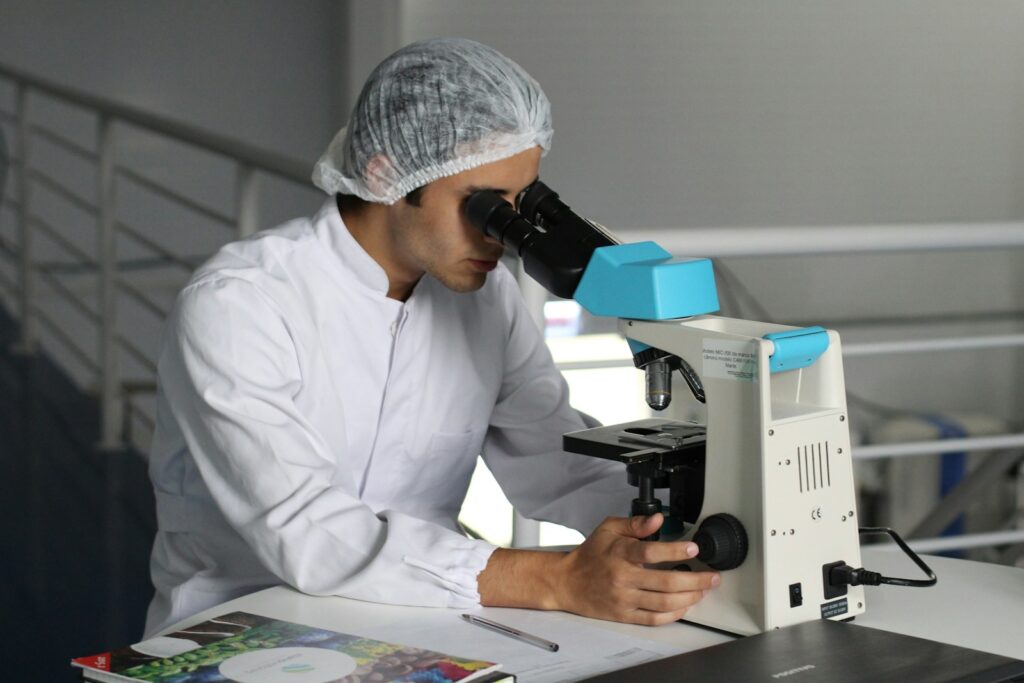
11. **Personal Life and Philosophical Leanings**Beyond his formidable scientific achievements, John B. Gurdon was a man of distinctive personal qualities and philosophical outlooks that offered glimpses into the individual behind the Nobel laureate. Born on October 2, 1933, in Dippenhall, England, to William Nathaniel Gurdon, a banker, and Elsie (Byass) Gurdon, a physical education teacher, he grew up in the English countryside with a sister named Caroline. His early life cultivated a keen interest in the natural world, a fascination that would define his professional path.
In 1964, he married Jean Elizabeth Margaret Curtis, the daughter of a business owner in Oxford. Together, they built a family and had two children, Aurea and William, and later, two grandchildren. Despite his towering intellect and dedication to rigorous scientific inquiry, Dr. Gurdon harbored a surprising self-description: he considered himself an “anti-intellectual” and famously “hated to read books.” This candid admission, perhaps a reflection of his hands-on, observational approach to science, speaks to a personality that valued direct experience and empirical evidence over theoretical abstraction or extensive literary consumption.
His personal interests were as active and varied as his intellectual pursuits. Dr. Gurdon was a keen skier, hiker, squash, and tennis player, reflecting a dynamic and engaged approach to life outside the laboratory. Regarding his broader perspectives, he described himself as politically “middle of the road” and religiously agnostic, maintaining that “there is no scientific proof either way.” While acknowledging his Christian upbringing in the Church of England, he held a “liberal-minded” view, even causing minor controversy during his tenure as Master of Magdalene College, Cambridge, by suggesting that Fellows might occasionally deliver “an address on anything they would like to talk about” in college chapel services. These facets of his personal life underscore a man who, while deeply rooted in scientific objectivity, remained open-minded and grounded in his own unique interpretation of the world.
Read more about: Fortifying the Sanctuary: 11 Key Features of Keanu Reeves’s Hollywood Hills Home and Its Protection from Intruders

12. **International Honors and Awards**Dr. John B. Gurdon’s extraordinary contributions to developmental biology garnered him a truly impressive array of international honors and accolades throughout his distinguished career. Beyond the shared 2012 Nobel Prize in Physiology or Medicine, which crowned his work, he was recognized by numerous prestigious organizations and institutions globally, highlighting the profound and far-reaching impact of his discoveries. These awards celebrated his innovative research, his leadership, and his enduring influence on the scientific community.
Among his significant recognitions was the Wolf Prize in Medicine, an Israeli international award, which he received in 1989. In 2009, he was honored with the Albert Lasker Basic Medical Research Award, often dubbed the “American Nobel,” an award he shared with Shinya Yamanaka, underscoring the complementary nature of their work in nuclear reprogramming. The Royal Society, Britain’s national academy of sciences, bestowed upon him its Royal Medal in 1985 and the prestigious Copley Medal in 2003, acknowledging his fundamental and sustained contributions to science.
His achievements were also recognized by the highest authorities in his native country; he was knighted by Queen Elizabeth II in the 1995 Birthday Honours for his exceptional “services to Developmental Biology,” allowing him to use the title “Sir.” Furthermore, he was elected as a Fellow of the Royal Society (FRS) in 1971 and received fellowships and memberships from leading scientific academies worldwide, including the American Academy of Arts and Sciences in 1978, the United States National Academy of Sciences in 1980, the American Philosophical Society in 1983, and the Academia Europaea in 1991. He was also an Honorary Member of the American Association of Anatomists since 2005 and an Honorary Fellow of numerous esteemed bodies such as the Cambridge Philosophical Society (2010), the Academy of Medical Sciences (2011), the Anatomical Society (2013), the American Association for Cancer Research (2013), the Royal College of Physicians (2014), and the Royal Society of Biology (2015). These many distinctions collectively paint a picture of a scientist whose revolutionary insights were celebrated across continents and disciplines.
Read more about: Beyond the Limelight: Exploring the Intellectual Journeys of Public Figures in Philosophy and Particle Physics
13. **Mentorship and Lasting Legacy**Beyond his monumental discoveries, Sir John B. Gurdon’s impact is profoundly felt through his dedication to mentorship and the enduring legacy he imprinted on generations of scientists. His unwavering enthusiasm for scientific inquiry was infectious, inspiring countless students and colleagues to pursue challenging questions in developmental biology. Dr. Douglas Melton, co-director of the Harvard Stem Cell Institute and a former student in Dr. Gurdon’s lab, eloquently captured this spirit, stating, “To him, science was a wonderful life, and he thought everyone should participate in it.” This sentiment speaks volumes about Gurdon’s open and encouraging approach, contrasting sharply with the early discouragement he himself faced.
He cultivated an environment of intellectual rigor combined with genuine curiosity, nurturing the talents of aspiring researchers. The breadth of his influence is evident in the global reach of his protégées. Dr. Melton further affirmed, “He trained a whole generation of scientists. The world’s universities are populated with his protégées.” This direct lineage of knowledge and scientific methodology ensures that Gurdon’s foundational principles continue to inform and drive contemporary research, extending his influence far beyond his own direct output.
His work fundamentally transformed scientists’ understanding of DNA and initiated a revolution in genetics that reshaped how DNA is studied and how diseases are diagnosed and treated. The intellectual groundwork he laid made possible advancements like induced pluripotent stem cells, which are now routinely used to create specific tissues in culture for studying genetic expression and developing personalized therapeutics. Thus, Gurdon’s most profound legacy is arguably not just the experiments he conducted or the prizes he won, but the vibrant intellectual ecosystem he helped cultivate and the countless scientific minds he inspired and equipped to carry forward the torch of discovery, ensuring his contributions continue to yield fruit for decades to come.
Read more about: The 15 Most Excellent Movies: From ’84 to ’23, How Many Of These Must-Sees Have You Conquered?
14. **A Life Dedicated to Unlocking Cellular Secrets**The life and career of Dr. John B. Gurdon represent an extraordinary odyssey from academic skepticism to scientific triumph, marked by an unwavering dedication to unraveling the deepest mysteries of cellular life. His journey, famously beginning with a dismissive teacher’s note, serves as a powerful testament to the triumph of innate curiosity and intellectual perseverance over early adversity. He never allowed initial setbacks to deter his profound commitment to understanding the biological world, particularly the enigmatic processes of development and differentiation.
Gurdon’s work introduced a paradigm-shifting method of cell manipulation that challenged entrenched dogmas and fundamentally altered scientific understanding of cell identity and potential. His pioneering frog cloning experiments, conducted when the field of genetics was still in its nascent stages, provided the first undeniable proof that the specialized state of a cell was not fixed but reversible. This revolutionary insight, initially met with skepticism, gradually gained acceptance, paving the way for the cloning of mammals and the development of modern stem cell biology.
His intellectual courage, meticulous experimental design, and relentless pursuit of fundamental questions transformed biology and laid the indispensable foundation for many of today’s most promising avenues in regenerative medicine. The profound implications of his work, from understanding genetic expression to developing new therapies for hereditary diseases and repairing damaged tissues, continue to resonate across the scientific and medical landscape. Dr. John B. Gurdon’s passing at 92 marks the end of an era, but his indelible contributions ensure his legacy will continue to inspire and guide future generations in their quest to unlock the secrets of life.
Read more about: Unlocking the Secrets of Your Ears: A Comprehensive Consumer’s Report on Hearing, Balance, and Beyond
As the scientific community reflects on the indelible contributions of Sir John B. Gurdon, it is clear that his life’s work transcends mere discoveries; it embodies a profound reorientation of how humanity perceives life’s fundamental building blocks. From the unlikeliest of beginnings, he reshaped the very fabric of developmental biology, demonstrating that the potential for life lies inherent in every cell, waiting to be unleashed. His journey, punctuated by both skepticism and triumph, stands as a beacon of scientific resilience and intellectual pioneering. The seeds of understanding he planted have blossomed into a vibrant garden of regenerative medicine and genetic research, offering hope for countless future medical breakthroughs. While we bid farewell to a giant, his vision for cellular plasticity and the dynamic dance of genes will continue to illuminate the path forward, ensuring his legacy pulsates through every new discovery in the quest to understand and harness the miracle of life itself.

